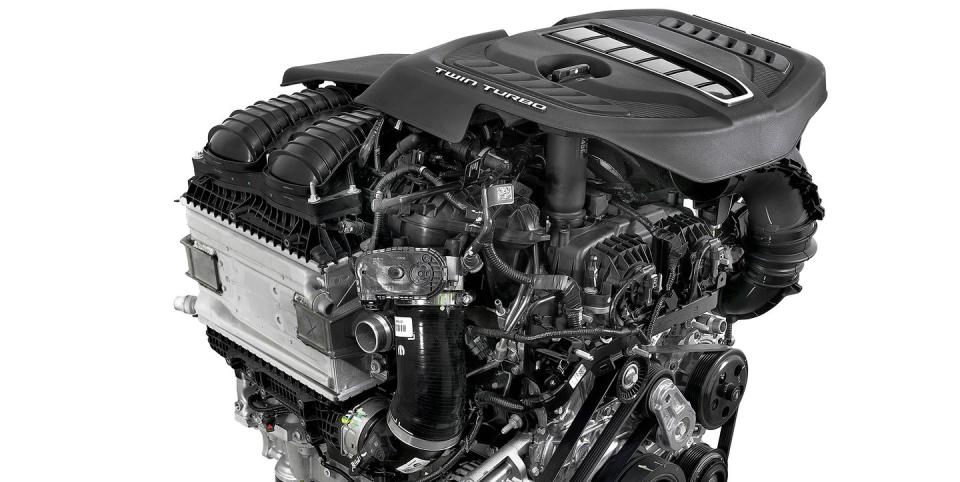The Stellantis Hurricane Is a 500-Plus-HP Straight-Six That's Pushing Out the V-8

Stellantis is the king of V-8s right now. All of its coolest cars are powered by Hemis that make big power and lots of noise. But they're also terribly inefficient, meaning they won't be here forever. Late Thursday the company finally revealed the engine that will inevitably replace its line of iconic eight-cylinder power plants: the Hurricane twin-turbo straight-six.
Based on the 2.0-liter turbocharged engine found in cars like the Wrangler and Cherokee, the engine uses an aluminum block with Plasma Transfer Wire Arc (PTWA) coating in the cylinder bores, therefore reducing friction as the pistons travel. Inside you'll find a forged steel crankshaft and connecting rods paired with aluminum pistons. There's also direct injection, dual overhead cams with independent variable valve timing, an and engine-mounted water-to-air charge cooler. The exhaust manifolds are integrated into the head, where they can be water-cooled to lower turbo intake temperatures. All of this allows the engine to be 15 percent more efficient than its larger counterparts.
Of course, what we're most curious about is power. Stellantis has yet to tell us exact specs, as they'll vary from car to car. But it's released a few key details that give us a good idea of what to expect. There will be two versions of the Hurricane straight-six: A Standard Output (SO) variant and a High Output (HO) variant. The Standard Output engine focuses on fuel economy and is expected to deliver over 400 hp and 450 lb-ft of torque using 22 psi of boost, depending on the model it's found in. The High Output version—the one we're all interested in—is meant for performance and towing applications, and will make "more than" 500 hp and 475 lb-ft of torque, says Stellantis, thanks to 26 psi of boost from the turbos. For some context, the current 392 Hemi V-8 available in the current Challenger makes 485 hp and 475 lb-ft of torque. Like most modern turbo motors, the company promises a nice flat torque curve from the Hurricane, saying it will deliver at least 90 percent of its peak torque from 2350 rpm to redline.
“As Stellantis aims to become the U.S. leader in electrification, with a 50-percent battery-electric vehicle (BEV) sales mix by 2030, internal combustion engines will play a key role in our portfolio for years to come and we owe it to our customers and the environment to provide the cleanest, most efficient propulsion possible,” Stellantis head of propulsion systems Micky Bly said in a statement. “The Hurricane twin-turbo is a no-compromise engine that delivers better fuel economy and an important reduction in greenhouse gases without asking our customers to give up performance.”

 Yahoo Autos
Yahoo Autos 